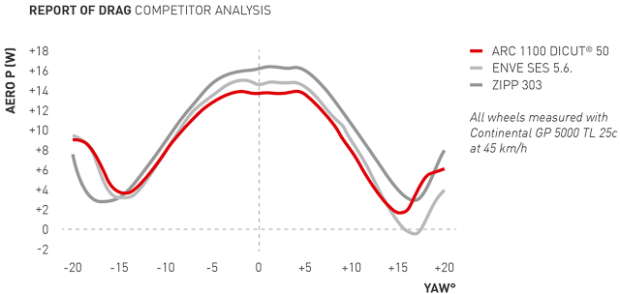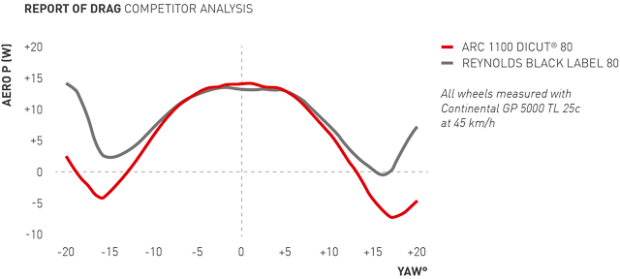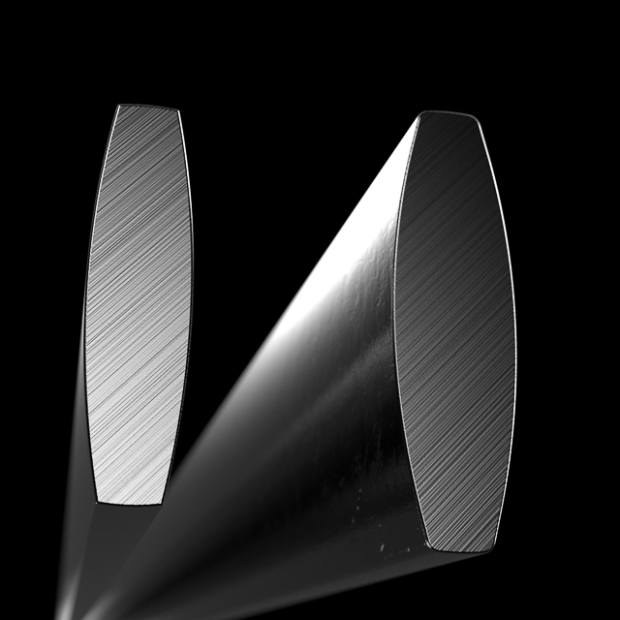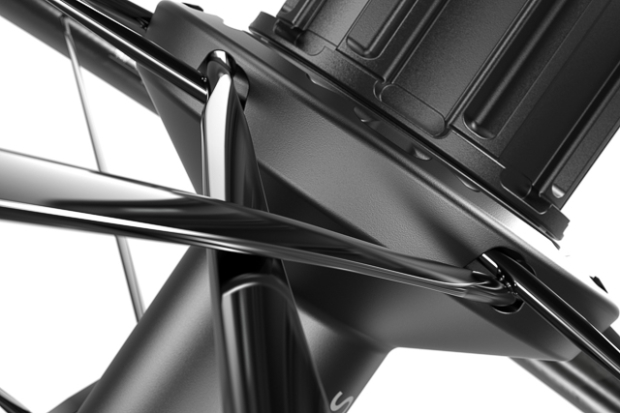DT Swiss Debuts Faster, More Stable ARC Wheels
DT Swiss debuted the previous-generation ARC wheels not long ago, for model year 2018. ARC stands for Aero Road Carbon, meaning that they’re right up the alley of competitive triathletes and road racers. They were built around a concept called AERO+, which is a theme of total performance beyond just aerodynamics, which is a common selling motif we see among most manufacturers in the modern era. What does that mean? Not only are they considering aerodynamics, but also tire rolling resistance, tubeless compatibility, wheel stiffness, handling / steering input, and other factors.
By all accounts, DT is a legitimate player in the performance wheel game. Their wheels have been ridden to multiple world titles and podium finishes, pedaled by the likes of Daniela Ryf, Anne Haug, and Richard Murray. We reviewed the previous generation ARC wheels last year, which are still on this editor’s bike today (if it’s not obvious, wheels that stay on a picky editor’s bike are worth their salt).
We’ll dive in to the tech behind the new ARC line-up, including our hands-on test of their deepest-rim and most aerodynamic option, the ARC 1100 DICUT 80.

DT Swiss continues to partner with Swiss Side for aerodynamic development. In partnership, they’ve continued to refine the AERO+ concept, taking into account the modern trends of disc brakes, wide tires, and tubeless tires. The man-with-the-plan is Jean-Paul Ballard, who has more than 20 years of experience in F1 racing and professional cycling.

Bicycle wheels deal with rotational drag and translational drag, and DT sought to minimize both. Rotational drag is just as it sounds – drag created by the spinning of the wheel. Rim depth and spoke length are big factors here; the deeper the rim and shorter the spoke, the less drag you create while spinning the wheel. Translational drag is caused by moving the wheel forward through space. This is affected much more by rim shape and width, along with tire shape and size.

DT Swiss also gave us extensive details on their work with steering input caused by the wind. This has been a hot topic with wheels in the past five to ten years, and is also referred to as wheel stability. In short, the shape of the rim and tire system can affect how much a gust of wind could cause your handlebars to turn, because of the resulting center of pressure.

More stability equals less steering input… equals easier handling for you, the rider. The graph above shows DT’s data for steering moment, for each of the three rim depths offered. We don't have any objective way of testing these claims, but will comment on our impressions in a forthcoming ride review.

The rolling resistance wars continue, and DT Swiss voiced this as a priority. They increased the inner rim width from 17mm to 20mm, increasing tire volume for all tire sizes. The minimum recommended tire size for the new ARC series is 25mm, which has quickly become the new ‘standard’. Note, however, that the latest crop of 25mm tires are roughly the same size as what used to be called “23mm” – because some brands are basing their labeled tire sizes around a 19mm internal rim width, rather than the 13 – 15mm rims of yesteryear (effectively downsizing tires of a given size). Don’t worry – this will not have any big effect on your daily life. The take-home is that you need to learn what size tire your bike frame will fit, and measure your actual inflated tires with a caliper to ensure they’ll fit – because this actual inflated size often does not match what the label says.
Note that DT officially recommends a 25mm front tire, paired with a 28mm rear tire – but the latter will likely not fit into most triathlon bikes older than the most recent model years.

DT has a new rim shape, which they’re calling “VU-shape”. Old-school rims used a V-shape, seen on the left in the photo above. Newer rims took on more of a U-shape in the last ten years or so, seen on the right. DT created a hybrid shape (center, above), which they say tested to be the best combination of handling and stability.
Three depths are offered – 50mm, 62mm, and 80mm. All three feature standard hooked rim edges, tubeless compatibility, and no restrictions on tire model or construction.

The aero graph above shows the performance of the 50mm model, compared to the ENVE SES 5.6 and Zipp 303 – all using the 25mm Continental GP 5000 TL.

The aero graph above shows the performance of the 62mm model, compared to the ENVE SES 5.6 and Zipp 404 NSW DB.

Finally, the graph above shows the performance of the 80mm model, compared to the Reynolds Black Label 80 DB.

We’ll move on to the wheel construction, highlighting the improvements made over previous ARC wheels. DT is known first-and-foremost for their spokes, and this is a key area of change. The Aerolite II (left) and Aero Comp II (right) are exclusive to the new ARC lineup, and save up to 1.1 watts in rotational drag due to a new profile.

These new spokes feature T-shaped heads, which help to keep the spokes from twisting, and also allow for thinner hub flanges.

DT Swiss also updated their rear hub internals to a new Ratchet EXP design. DT Claims a stiffer hubshell, longer service life, and reduced weight. Engagement comes courtesy of a 36-tooth ratchet.

The new DT 180 hubs take painstaking measures to reduce weight – including eliminating sections of the splined Center Lock disc brake interface. It’s also worth noting that DT is making these wheels ONLY for disc brakes. 12mm thru axles come standard, though DT does have accommodations for quick release skewers.

All three rim depths of the ARC 1100 DICUT sell for a hefty price tag, at $3,025 per pair. Weights come in at 1,472g (50mm), 1,676g (62mm), and 1,762g (80mm). DT also sells the same rims, paired with 240 hubs and Aero Comp II spokes, and calls it the ARC 1400 DICUT. These reduce the price to $2,479, and increase the weight by about 75 grams per pair.
This covers the technical highlights of the new wheel line-up, and we’ll share our own photos, thoughts, and ride review in the coming days.







Start the discussion at forum.slowtwitch.com